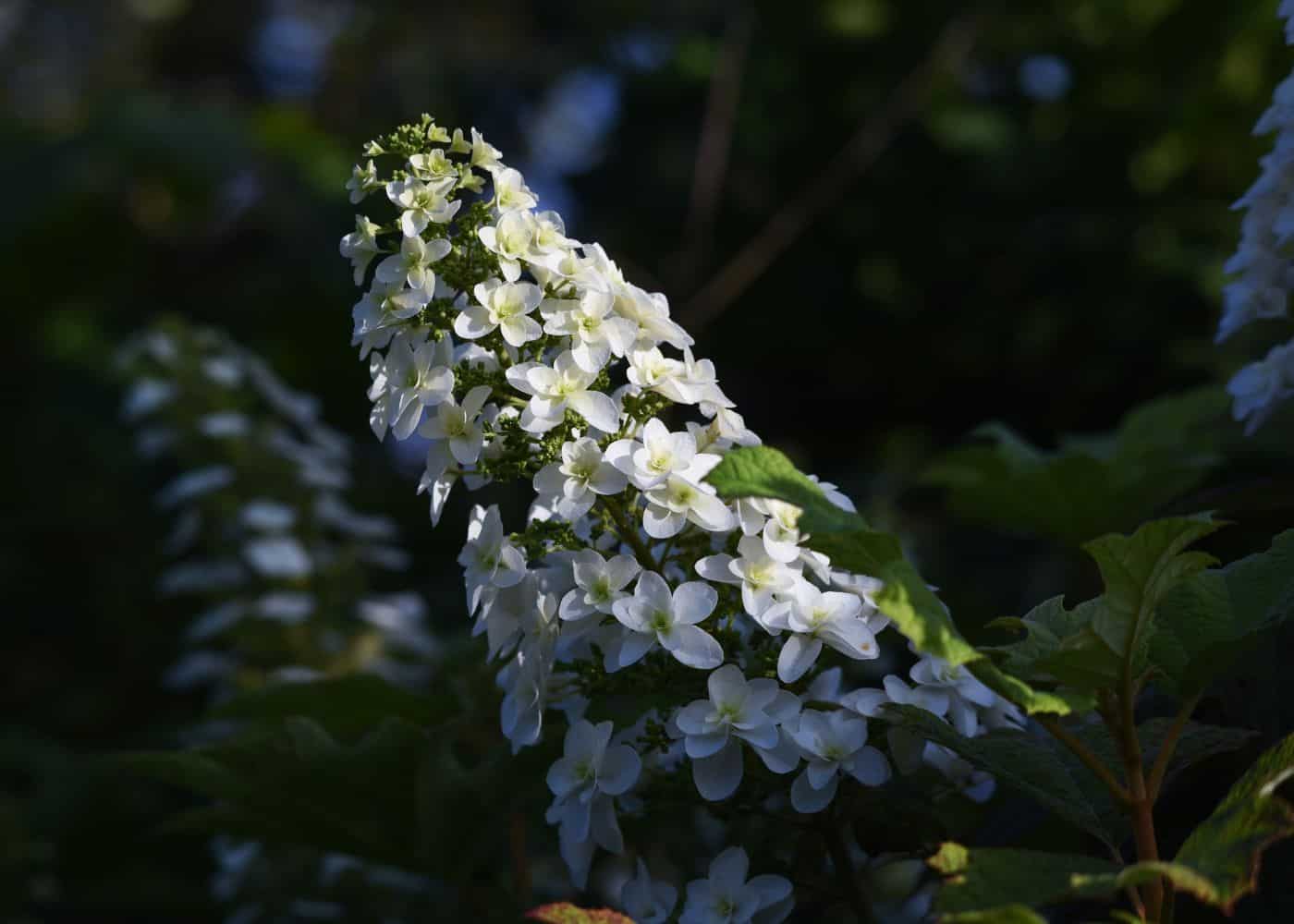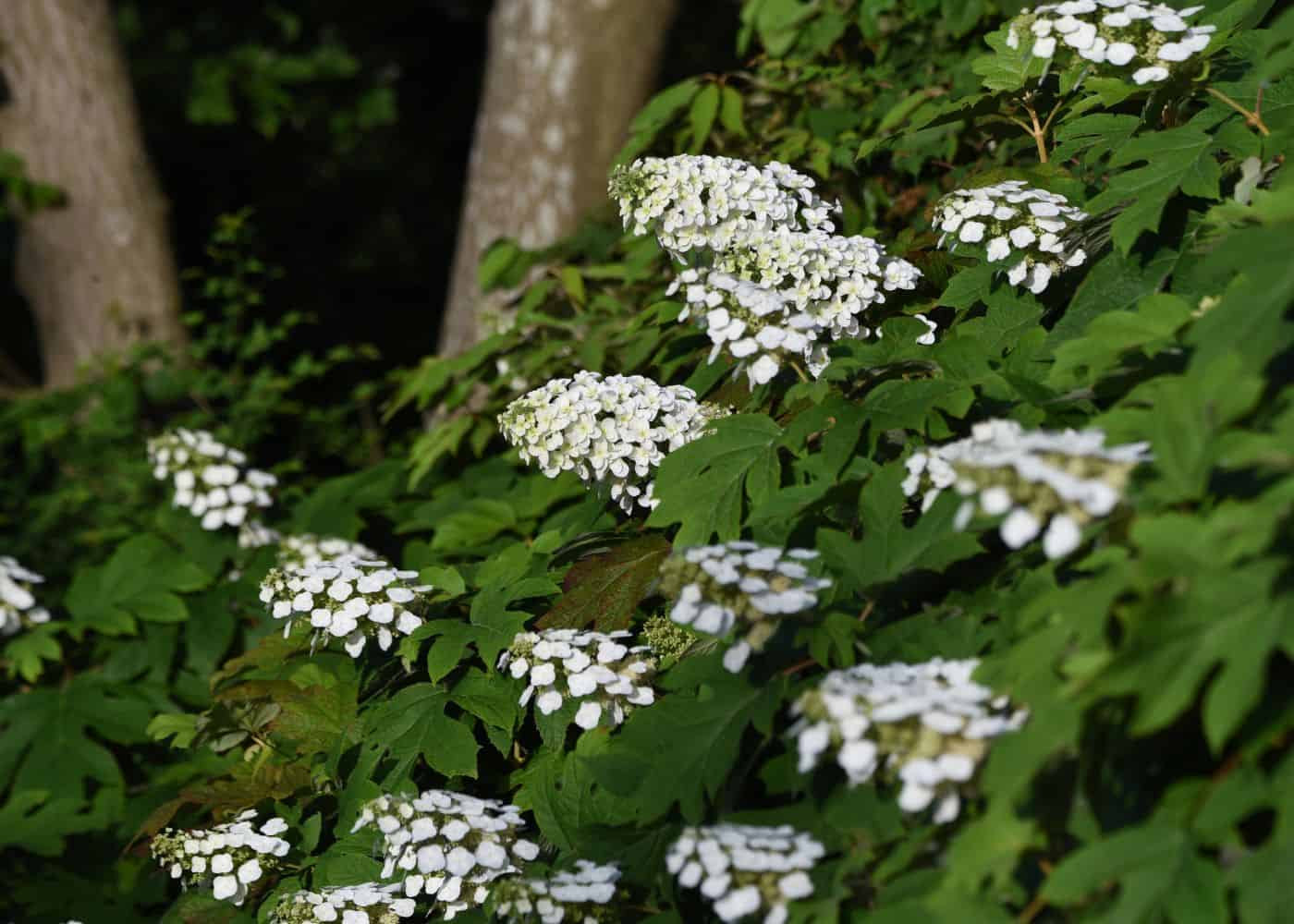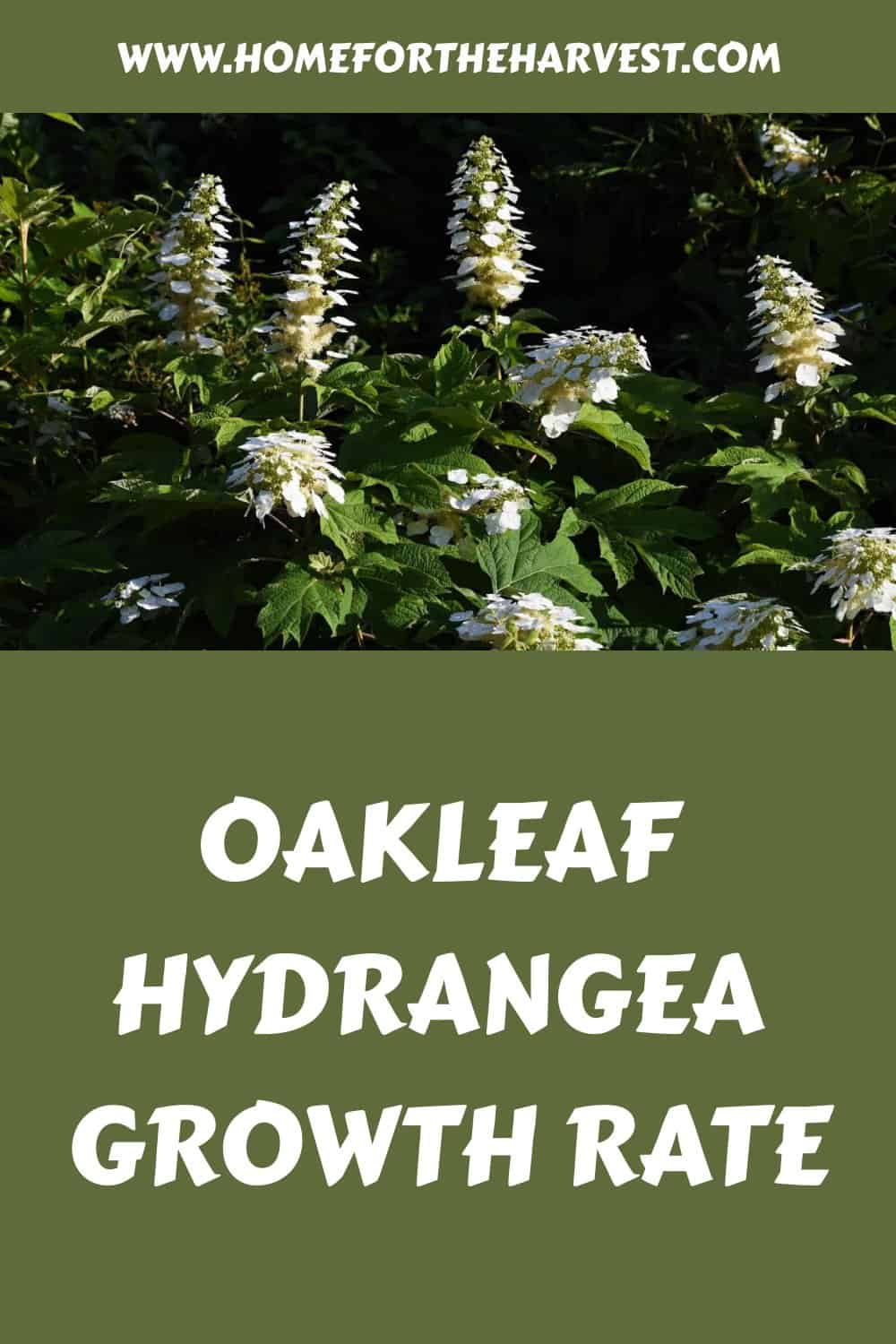Oakleaf hydrangea shrubs typically grow about 1-2 feet taller each year until they reach their mature height. Miniature varieties like PeeWee usually put on up to a foot of growth annually, reaching only 3-4 feet tall when fully grown. Larger cultivars like Gatsby Pink grow more like 2 feet per year in good conditions, reaching 6-8 feet tall.
This hydrangea species is not a shade lover and grows fastest when planted in warm temperatures, in a full sun planting location, and in an area with plenty of soil moisture. Larger varieties tend to grow faster than small varieties. Oakleaf hydrangeas tend to grow wider and bushier faster than they grow taller and are great for filling up space in just a few years.
Oakleaf hydrangea growth rate basics
Oakleaf hydrangeas are a popular choice for gardeners looking to add color and texture to their outdoor spaces. But before you start planting, it’s important to understand the growth rate of these plants so that you can plan accordingly.
Ideal climate conditions for speedy growth
Hydrangeas grow best in climates with long growing seasons and mild temperatures. If your area experiences very cold winters or overly hot summers, this could significantly slow the growth rate of your oakleaf hydrangea. However, your plant should thrive if you live in a temperate area with warm springs and falls.

Sunlight effects on growth rate
Sunlight is one of the most important factors when it comes to oakleaf hydrangea growth rate. These plants grow the fastest when they receive a minimum of 6 hours of direct sunlight each day. Oakleaf hydrangeas can generally be planted in the all-day sun in mild areas but often do better with some afternoon shade in regions with very hot summer afternoons. Look for a planting area where the leaves get maximum morning sun and are protected from harsh environments.
Watering and nutrient effects on growth rate
Just as plants need sunlight, they also need water. Oakleaf hydrangeas are not particularly drought tolerant and can become stressed and stop growing when they experience a lack of water. Likewise, a lack of a specific nutrient like Nitrogen can stunt their growth. For speedy growth, they need consistent access to water that contains all the necessary mineral nutrients for healthy growth.
Effect of cultivar genetics on growth rate
Many varieties of oakleaf hydrangeas are available, each with its unique characteristics regarding size and shape. Some grow faster than others, but all will reach a mature size within 3-5 years in ideal environmental conditions. It is important to consider the current and potential mature sizes when selecting which variety is right for you.
Planting tips for optimal growth
A fast growth rate depends upon getting the plant off to a good start. Here are the planting basics for a healthy oakleaf hydrangea.
Soil preparation
The soil for oakleaf hydrangeas should be well-draining and slightly acidic. Adding organic matter such as compost or peat moss can help improve the drainage of heavy clay soils. To ensure optimal growth, it is important to test your soil’s pH level before planting and adjust accordingly with lime if needed.
Sunlight requirements
Oakleaf hydrangeas prefer full sun in cooler climates but need some shade in warmer areas. If you live in a hot climate, try to find a spot that gets morning sun and afternoon shade to keep your plants from getting too much direct sunlight during the hottest part of the day.
Water requirements
It is important to water oakleaf hydrangeas regularly so they do not dry out completely between watering sessions. During extreme heat or drought periods, they may need more frequent watering than usual; however, care should be taken to avoid overwatering as this can lead to root rot or other issues.
As a rule of thumb, checking the soil moisture levels every few days is recommended. You can check by sticking your finger into the top inch or two of soil. If it feels dry, it is time for another drink.

Pruning and care
Proper pruning practices and other maintenance tasks can have an important effect on growth rates.
Pruning season effect on growth rate
In general, pruning in early spring encourages vigorous growth, while pruning in the summer can stunt growth. Oakleaf hydrangeas are most commonly pruned in the summertime because pruning in the spring would trim off their flower buds, and the plant would not flower that summer.
So, for young oakleaf hydrangeas that are not yet flowering much, you can prune them in late winter or early spring to encourage vigorous growth during the upcoming growing season. Just know that they will not bloom during that growing season.
Established oakleaf hydrangeas that are nearing mature size often flower quite well. For these plants, move to the ideal summer pruning timing, trimming them right after the flowers start to fade in the summer.
How to prune oakleaf hydrangeas
When pruning oakleaf hydrangeas, start by removing any dead or diseased branches first and then move on to shaping the shrub as desired. You can also remove any shoots that are growing outside of where you want your shrub to stay contained within its designated area.
To keep a natural shape, try cutting back only one-third of each stem at a time and leaving some leaves on each branch so that photosynthesis can continue taking place in order for healthy growth and flowering later on in the season.
Fertilizing your oakleaf hydrangea regularly with an all-purpose fertilizer can help promote healthy growth throughout the year. It is recommended to fertilize once a month during spring and summer when plants are actively growing, but avoid doing so in winter as this could lead to tender new growth, which may not survive cold temperatures if frost occurs unexpectedly overnight. Additionally, be careful not to overfertilize as this could burn delicate roots leading to stunted growth or even death of the plant.
Troubleshooting common growth rate issues
An oakleaf hydrangea’s growth can be slowed by all sorts of pest and disease issues. The plant must divert energy away from growing as it fights off whichever pests are attacking it. For the quickest size increase, deal with pest infestations as soon as you notice them.
Identifying signs of stress or poor health
Oakleaf hydrangeas are hardy plants but can still suffer from environmental stressors such as too much sun exposure or lack of water. Symptoms may include drooping leaves, brown spots on foliage, poor flowering performance, and stunted growth. If you notice any of these signs, it’s important to address the underlying cause immediately so that your plant can recover before more serious problems arise.
Dealing with pests and diseases
Insects, mites, and diseases can all affect the health of your oakleaf hydrangeas. Common pests include aphids, spider mites, scale insects, and caterpillars. To prevent infestations or reduce their severity if they occur, keep an eye out for signs of damage, such as wilting leaves or yellowing foliage.
If you spot any of these symptoms, taking action quickly is important to minimize further damage. Spraying plants with sharp streams of water, insecticidal soap, or another organic option is usually effective in controlling pest populations without harming beneficial insects like bees and butterflies.







